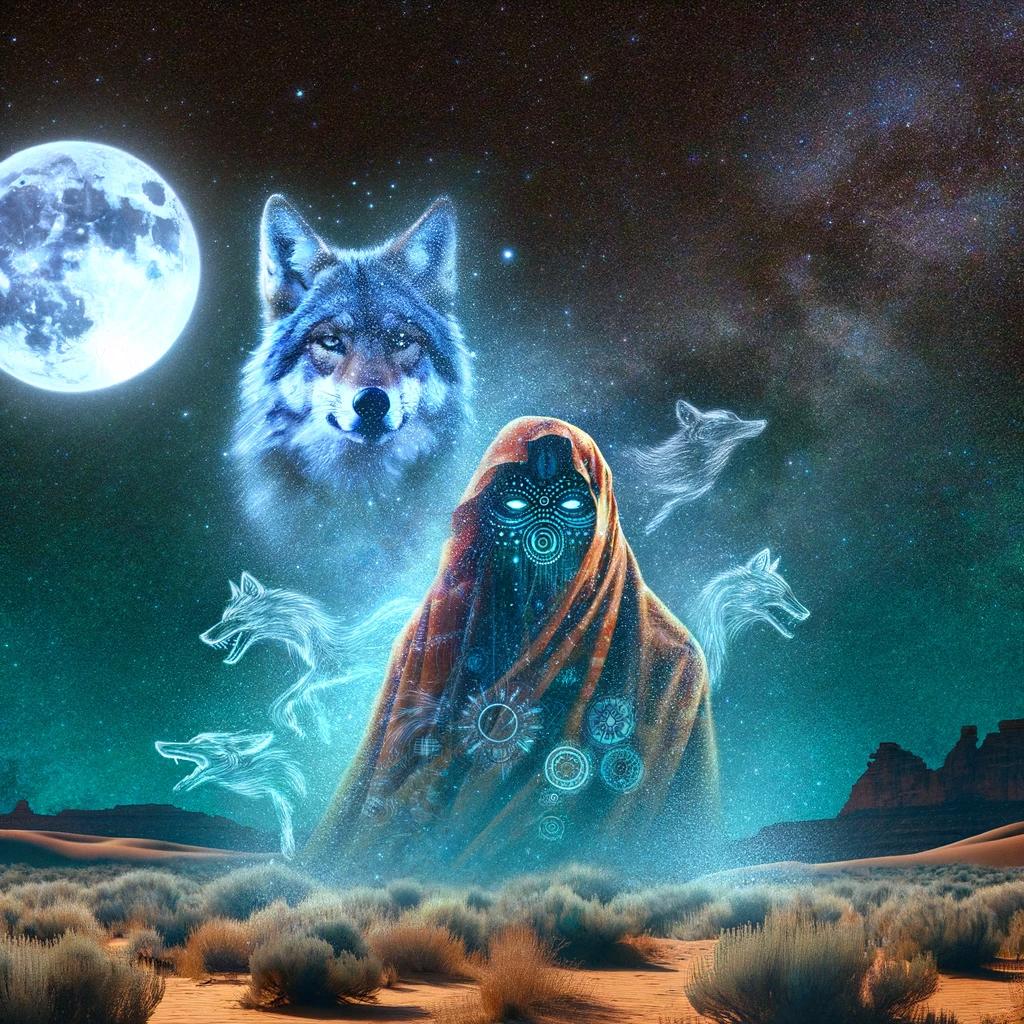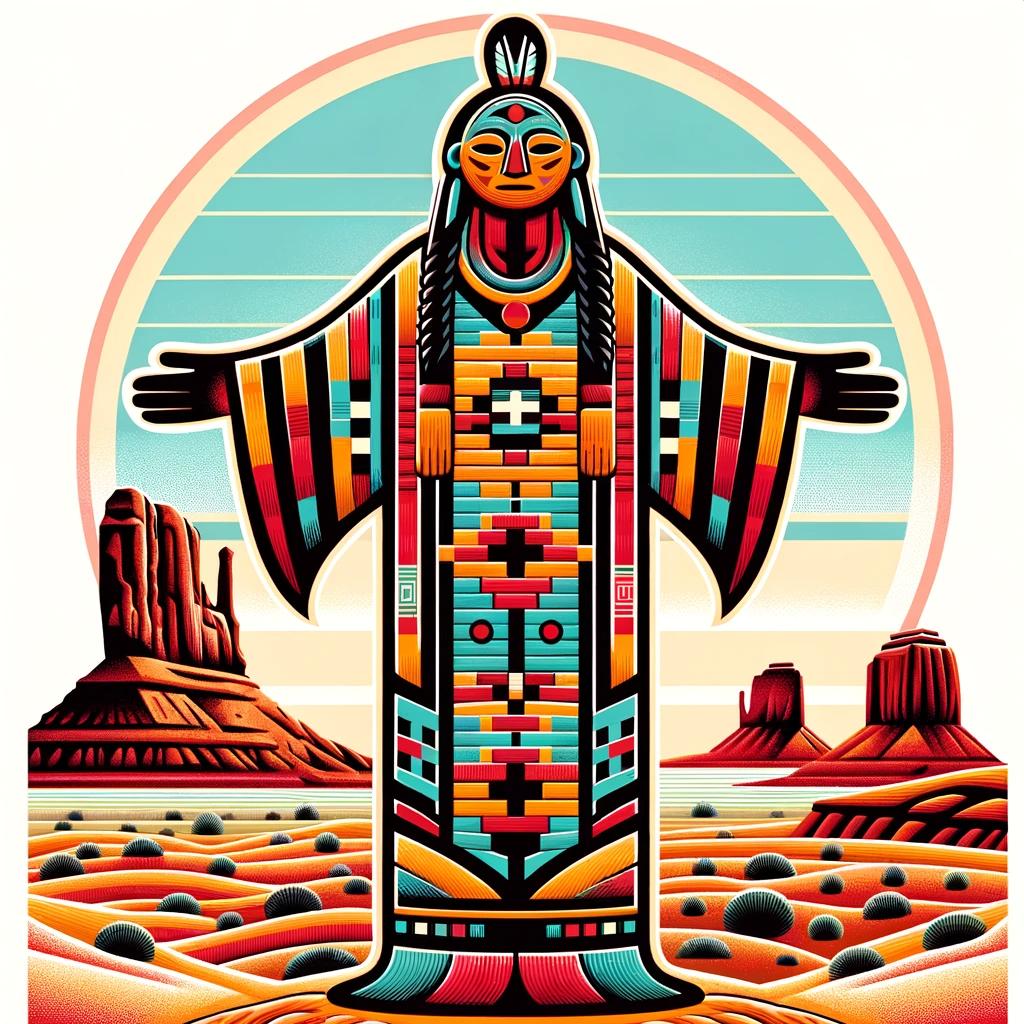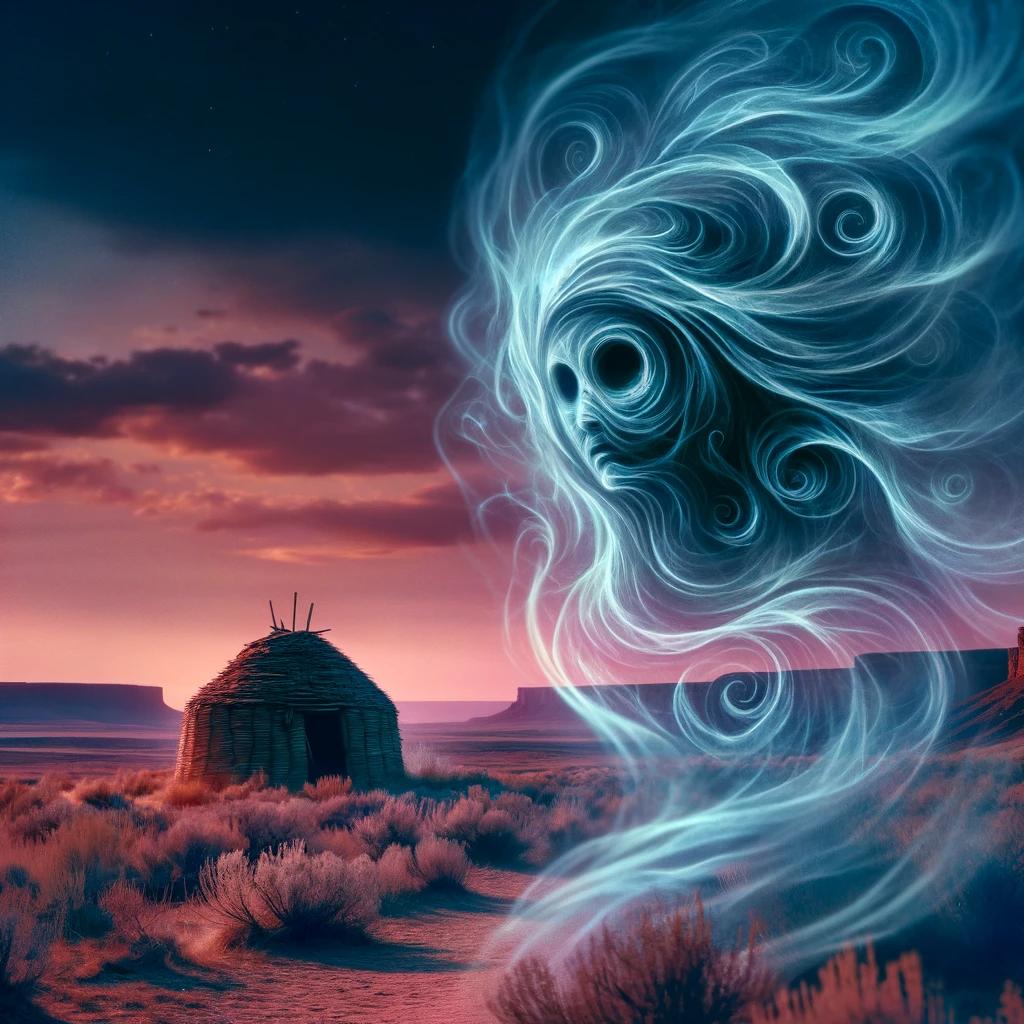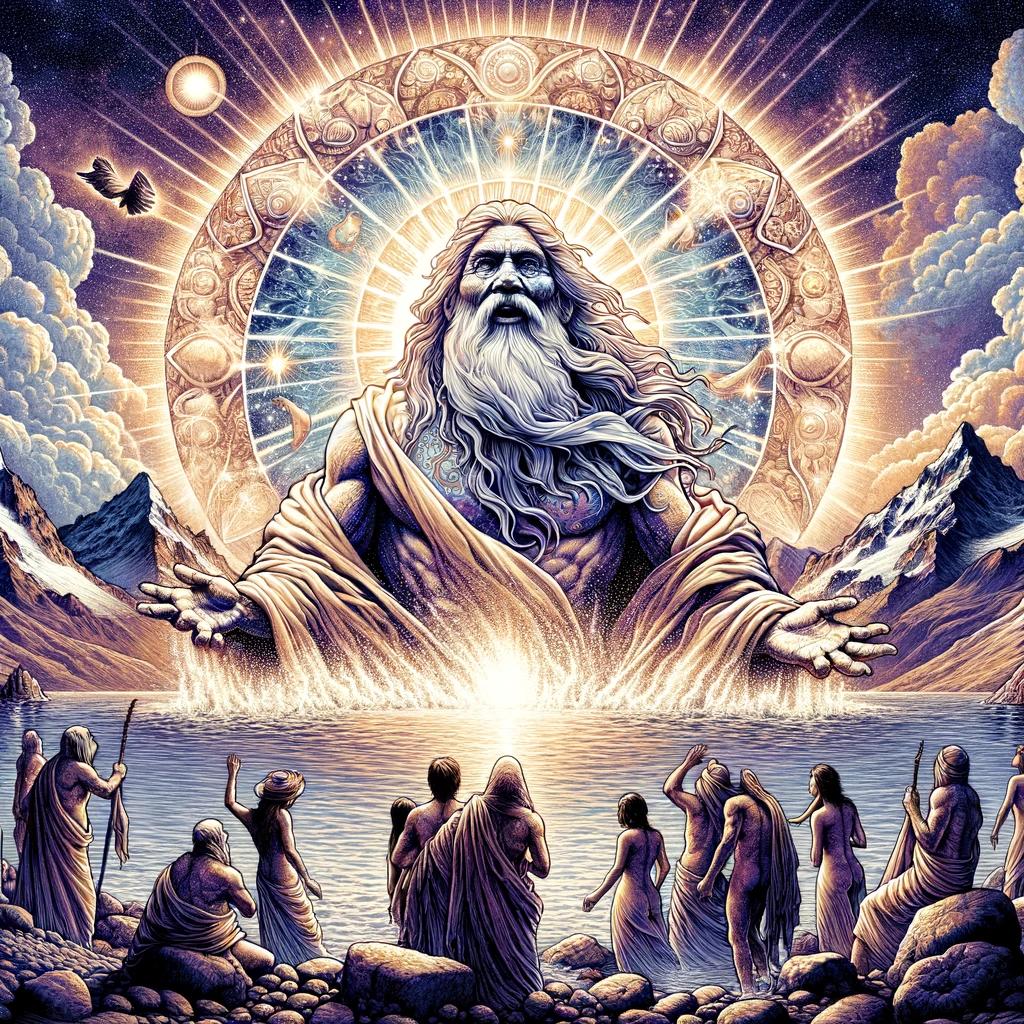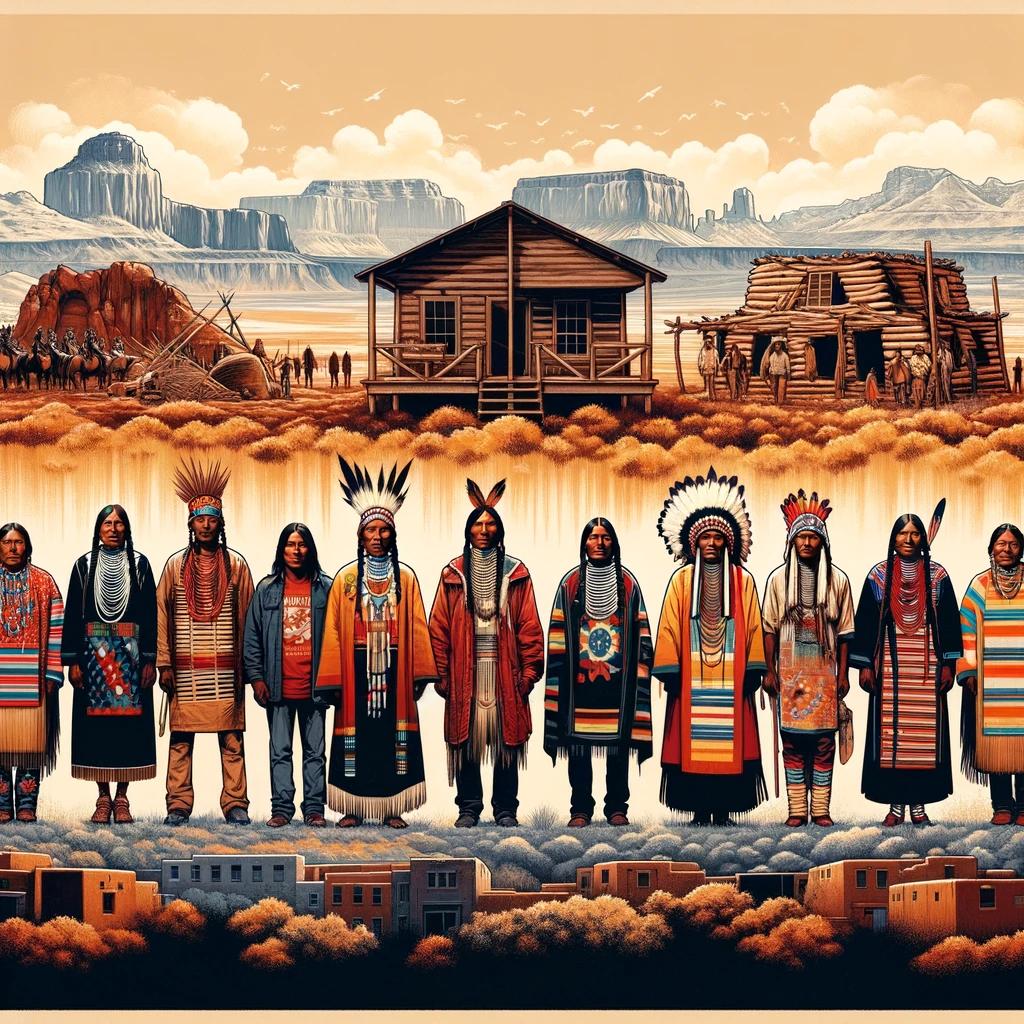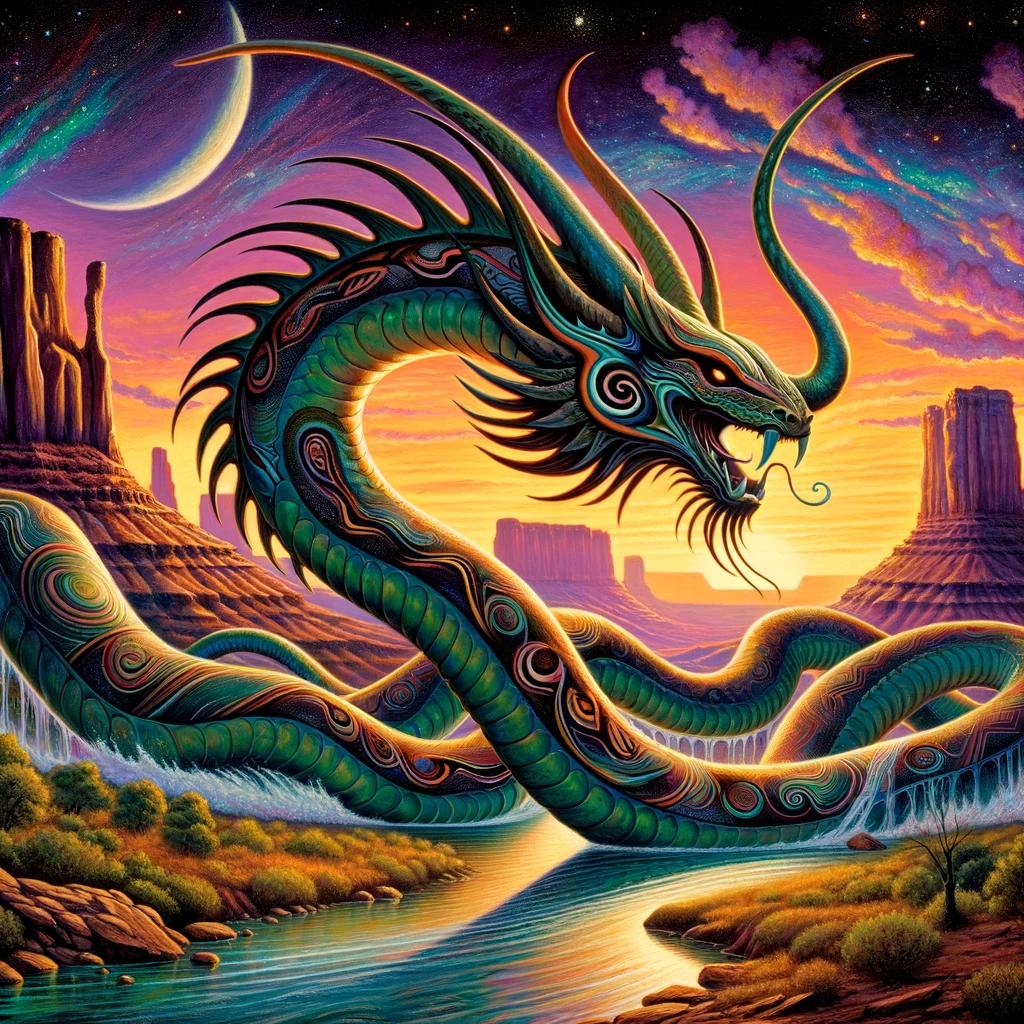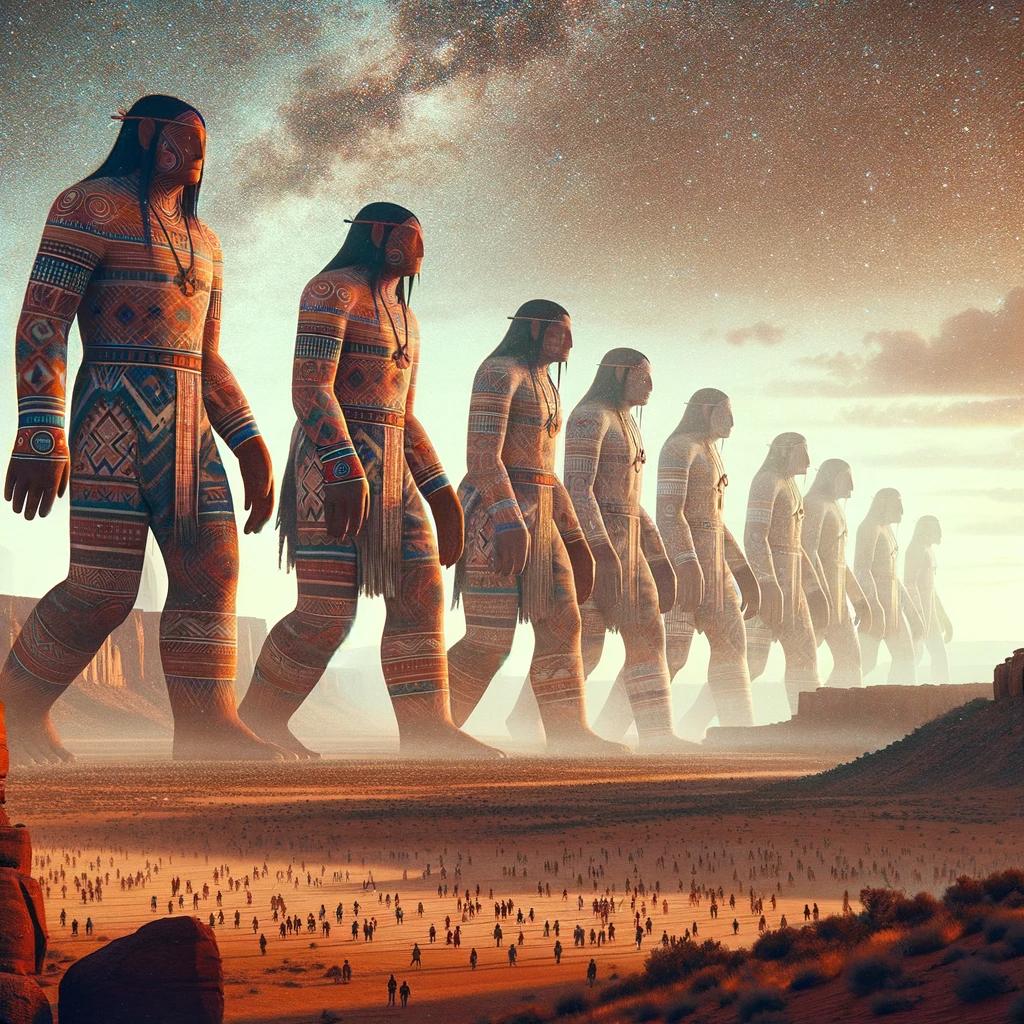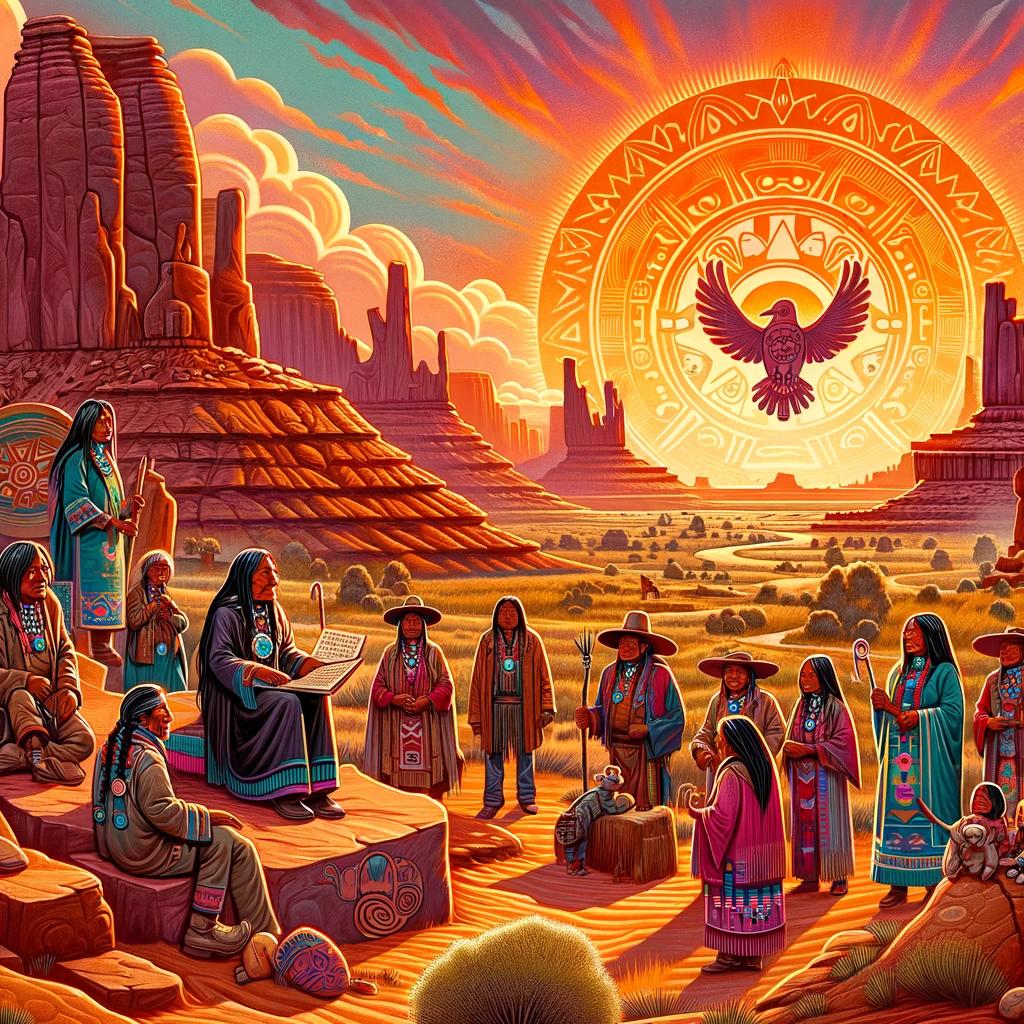Skinwalker in Navajo Mythology: A Terrifying Encounter with Evil Spirits
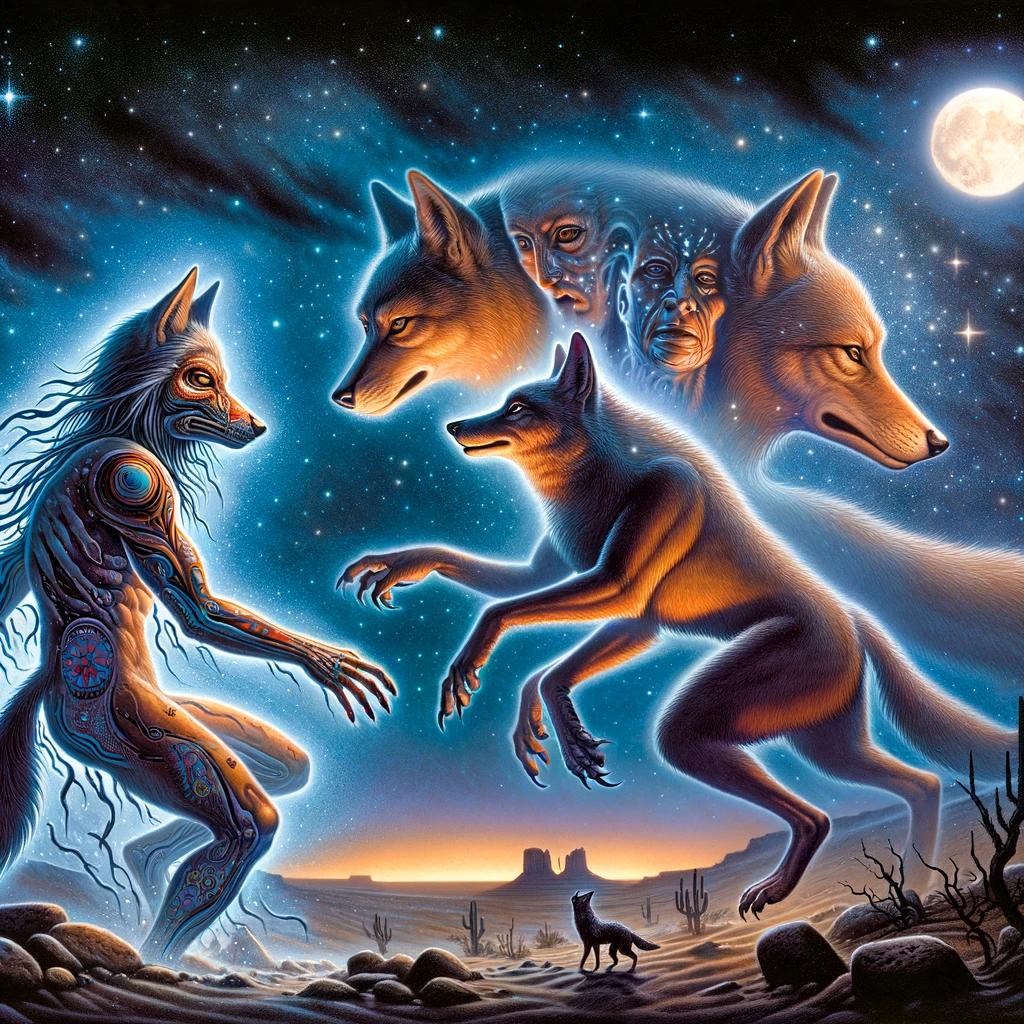
Skinwalker in Navajo mythology is a haunting and malevolent entity that holds a significant place in Native American folklore. These malicious witches possess the ability to transform into different forms and control both animals and people.
Stemming from corrupted healers and medicine men, they wreak havoc by causing harm, manipulating thoughts, and even controlling the weather. This article explores the origins, characteristics, and powers of skinwalkers, along with other creatures in Navajo mythology.
Additionally, it delves into the protective rituals and ceremonies practiced by the Navajo community to ward off these malevolent entities.
The Origins of Skinwalkers in Navajo Mythology
In Navajo mythology, the origins of skinwalkers can be traced back to the corrupting power of healing and medicine. Initially, revered as healers and medicine men, some individuals became consumed by their own power, leading to their descent into malevolence.
These individuals, once revered as guardians of health and well-being, transformed into beings that terrorize the Navajo community.
The Corrupting Power of Healing and Medicine
The practice of healing and medicine within Navajo culture was considered a sacred duty. However, some healers succumbed to the temptations of their own abilities and fell into corruption. The immense power they wielded proved to be their undoing, transforming them into skinwalkers – beings capable of dark magic and malevolent acts.
Transformation into Skinwalkers through Social Transgressions
According to Navajo belief, anyone can turn into a skinwalker if they commit serious social transgressions or break tribal taboos. These transgressions can range from murder and incest to more subtle acts of betrayal or spreading malicious gossip.
It is through these actions that individuals open themselves up to the corruption and transformation into skinwalkers.
In conclusion, the origins of skinwalkers in Navajo mythology can be attributed to the corrupting power of healing and medicine.
Once revered as healers, individuals who succumbed to the temptations of their power became malevolent and transformed into skinwalkers. Additionally, the transformation into a skinwalker is believed to occur through serious social transgressions, emphasizing the importance of upholding societal values within the Navajo community.
Characteristics and Powers of Skinwalkers
As malevolent entities in Navajo mythology, skinwalkers possess unique and formidable characteristics and powers.
Incredibly Powerful and Nearly Invulnerable Beings
Skinwalkers are renowned for their immense power, making them almost invulnerable to harm. Legends depict them as entities that are difficult to kill or defeat.
Shapeshifting Abilities and Connection to Animals
A defining characteristic of skinwalkers is their ability to shapeshift into various forms.
They possess a deep connection to animals and can assume their shapes, harnessing the strengths and abilities of these creatures.
Affinity for the Dead and Utilization of Magic
Skinwalkers are said to be drawn to cemeteries and the presence of the deceased, demonstrating a peculiar fascination with death. They are also skilled practitioners of magic and employ enchantments and spells to achieve their sinister objectives.
Other Creatures in Navajo Mythology
Navajo mythology is rich with tales of various creatures beyond skinwalkers. These entities evoke fear and fascination in native traditions, highlighting the diverse folklore of the Navajo people.
Cannibal Dwarves of the Great Plains
Referred to as Hecesiiteihii and Teihiihan, cannibal dwarves were aggressive beings, similar in size to children, endowed with magical powers, including the ability to become invisible.
Tales depict them as dangerous entities roaming the Great Plains, cautioning against encounters with their malevolent nature.
Terrifying Wendigos of Algonquian Tribes
Associated with the harsh winters and food scarcity faced by many Native American tribes, the wendigos are described as gaunt, giant humanoids with an insatiable appetite for human flesh. These grotesque manifestations serve as a reminder of the hardships endured in the relentless struggle for survival throughout Algonquian folklore.
The Tragic Tale of the Queen of Death Valley
Legend tells of a time when Death Valley was once a lush, green landscape inhabited by the Timbisha Shoshone tribe. The queen of this tribe ordered the construction of an extravagant palace but turned tyrannical.
Cursed by her own daughter, the queen’s wickedness invoked nature’s vengeance, transforming the once fertile land into a barren desert. The mirage of the doomed queen’s palace is said to persist, haunting the heat of the desert.
Malevolent Actions and Manipulation by Skinwalkers
Malevolent actions and manipulation are at the core of the skinwalker’s powers in Navajo mythology. These dark entities use their abilities to bring harm, disease, and misfortune to others, embodying the essence of evil itself.
Causing Harm, Disease, and Misfortune
Skinwalkers have the ability to influence and direct negative energy towards their victims, causing them physical and psychological harm. Through their malevolent intentions and supernatural powers, they can inflict illnesses, accidents, and even death upon those they target.
It is believed that their actions are fueled by a desire for control and a thirst for suffering.
Control over Possessed Individuals and Objects
One of the eerie capabilities of skinwalkers is their ability to possess both animals and humans, gaining control over their actions and thoughts. These possessed individuals become mere vessels for the skinwalker’s dark desires, often being manipulated to commit acts of violence, self-harm, or carry out malicious deeds.
Additionally, skinwalkers are believed to possess the power to manipulate objects from a distance, making them move or disappear at will.
Weather Manipulation and Illusion Creation
Skinwalkers possess a profound connection to nature and are said to have the power to manipulate the weather. They can conjure storms, strong winds, and extreme conditions, using them as tools to create chaos and turmoil.
Furthermore, skinwalkers are skilled illusionists, capable of distorting reality and creating deceiving visions that can disorient and terrify their targets.
These malevolent actions and manipulations demonstrate the immense dark power that skinwalkers wield.
Their abilities extend beyond the physical realm, penetrating the minds and souls of those who become their prey. The Navajo people are aware of these dangers and have developed rituals, ceremonies, and practices to protect themselves from these wicked beings.
Keep in mind that this text should be used as part of a larger article about “Skinwalker in Navajo Mythology” and should only cover the specific section mentioned.
Protection and Prevention from Skinwalkers
Protection against skinwalkers has been a crucial aspect of Navajo culture for centuries.
The Navajo people have developed various rituals, ceremonies, and practices to safeguard themselves from the malevolent influence of these entities.
Rituals, Ceremonies, and Prayers
A key component of protection involves the performance of specific rituals and ceremonies. Traditional Navajo shamans, known as hataałii, conduct these ceremonies to counteract the harmful intentions of skinwalkers. Through intricate rituals and sacred prayers, they seek divine intervention and invoke ancestral powers for protection.
Use of Herbs and Chants for Warding Off Evil
Navajo medicine men and women employ the use of sacred herbs, such as sage, cedar, and sweetgrass, to create protective smoke and purify the surroundings. The smoke is believed to repel negative energies and malevolent entities like skinwalkers.
Chants and incantations passed down through generations are recited during these rituals to amplify the protective effect.
Avoidance of Mentioning Skinwalkers and Their Stories
Another crucial aspect of protection involves the avoidance of discussing skinwalkers and their stories. It is believed that speaking about them can attract their attention and malevolent influence. Therefore, Navajo individuals are cautious not to share tales or engage in conversations related to these entities, ensuring they do not invite harm or draw the attention of skinwalkers.
Significance of Navajo Skinwalker Folklore
Navajo Skinwalker folklore holds great significance within the cultural fabric of the Navajo people. It serves as a reflection of the eternal struggle between good and evil, highlighting the delicate balance that exists in the world.
The tales of skinwalkers embody the darkness that can corrupt individuals and communities, reminding us of the consequences that come with the misuse of power.
Reflection of the Balance between Good and Evil
Navajo Skinwalker folklore acts as a symbolic representation of the constant battle between positive and negative forces.
The presence of skinwalkers within the mythology serves as a reminder of the ever-present duality in life. It underscores the importance of maintaining harmony and respecting the boundaries set by tradition to prevent the potential tainting of one’s spirit.
Empowering Human Agency and Moral Choices
Central to the significance of Navajo Skinwalker folklore is the notion of individual agency and the power of moral choices. The stories emphasize the responsibility humans have in determining their own paths and resisting the temptation to succumb to darkness.
They encourage individuals to make virtuous decisions, highlighting the potential for personal growth and spiritual fulfillment.
Preservation of Navajo Cultural Traditions
Navajo Skinwalker folklore plays a vital role in preserving the cultural heritage and traditions of the Navajo people. These tales are passed down through generations, maintaining a strong connection to the past.
By perpetuating these stories, Navajo culture remains vibrant and the knowledge surrounding the existence of skinwalkers is safeguarded, reinforcing the importance of cultural preservation in the face of modern challenges.
Skinwalker in Navajo Mythology: Cultural Impact and Modern Interpretations
The enduring legends and folklore surrounding the skinwalker in Navajo mythology have left a lasting cultural impact on the Navajo community and continue to pique the curiosity of outsiders.
These tales have become an integral part of Navajo oral tradition, passed down through generations, weaving a tapestry of supernatural entities and cautionary tales.
One aspect of the cultural impact of skinwalkers lies in their portrayal in modern media.
Books, movies, and television shows have taken inspiration from Navajo mythology, incorporating the malevolent beings known as skinwalkers into thrilling narratives that captivate audiences worldwide. However, it is crucial to approach such interpretations with respect and consideration for the Navajo community’s beliefs and cultural heritage.
Moreover, scholars and researchers have explored the significance of skinwalkers within a broader cultural context. They delve into the complexities of Navajo beliefs and the stories surrounding these shape-shifting malevolent witches.
These studies provide valuable insights into the psyche and spiritual beliefs of the Navajo people, shedding light on their understanding of good and evil, the power of choice, and the importance of balance.
For the Navajo community, the stories of skinwalkers hold significant cultural and spiritual meaning. They reinforce the understanding of the eternal struggle between light and darkness, and the necessity of maintaining harmony with nature and one’s community.
The cautionary nature of these tales serves as a reminder of the consequences that arise from straying from tribal values and social norms.
It is essential to approach the topic of skinwalkers respectfully, recognizing the cultural sensitivities and significance they hold for the Navajo people.
By engaging in open-minded and respectful discussions, we can deepen our understanding of Navajo mythology, appreciate its cultural richness, and foster intercultural appreciation.
.

